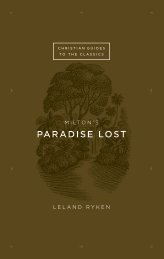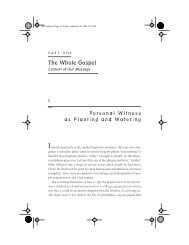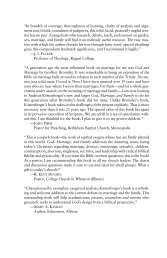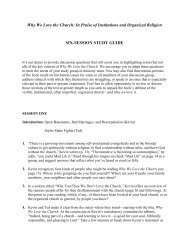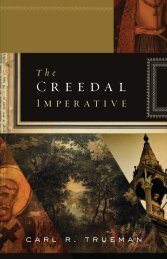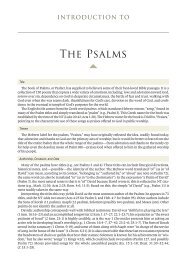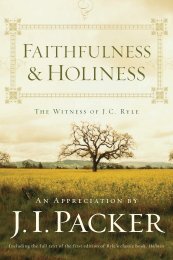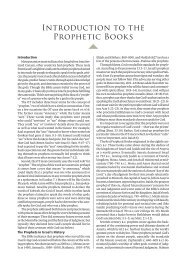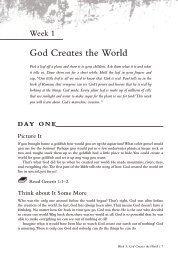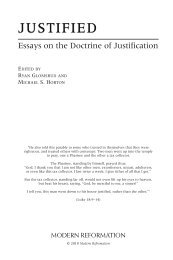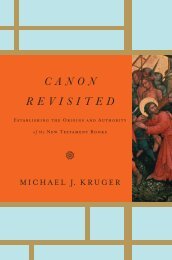PDF - Monergism Books
PDF - Monergism Books
PDF - Monergism Books
Create successful ePaper yourself
Turn your PDF publications into a flip-book with our unique Google optimized e-Paper software.
18<br />
Matthew<br />
guage uses a gematria, which is a kind of numerological symbolism. We find<br />
an example of this in the book of Revelation, where we read that the number<br />
of the beast is 666 (Rev. 13:18). Those numbers can be applied to real<br />
persons to identify the beast. If you look at this same kind of structure in<br />
the genealogical table, you will see that the number fourteen is the number<br />
of David. David is the central character of the ancestry, and Matthew is<br />
taking great pains to show that Jesus is from the line and lineage of David<br />
and that He has come to restore the fallen booth of the great king of the<br />
Old Testament.<br />
Another difference between the genealogy in Matthew and the genealogy<br />
in Luke is that Matthew lists the father of Joseph as Jacob; in Luke’s<br />
Gospel it is Eli. However, Luke does not use the term begat; he uses simply<br />
of someone. If you look through the genealogies, you will see that both<br />
the lists are selective, and that Matthew and Luke do not select the same<br />
people. The most notable difference is that in Matthew, the list moves<br />
from David to Solomon, whereas in Luke, it moves from David to Nathan.<br />
Solomon and Nathan were both sons of David, and, actually, the elder son<br />
was Nathan, not Solomon. Nevertheless, the kingship passed from David<br />
to Solomon rather than to Nathan. This gives us a clue as to why these<br />
genealogies are different.<br />
What scholars tend to agree on is that Matthew’s genealogy is the royal<br />
lineage of the kings of David. When Matthew gets to the sons of Jacob, he<br />
lists not the firstborn, Reuben, but Judah. The tribe of Judah was given<br />
the kingdom: “The scepter shall not depart from Judah . . . until Shiloh<br />
comes” (Gen. 49:10). In Matthew’s genealogy the heirs to the throne of<br />
David come down finally to the father of Joseph, whose name is Jacob. In<br />
Luke’s Gospel the genealogy does not come through the lines of the kings<br />
but from the son of Nathan.<br />
The genealogies differ past David, and we do not know why. Suggested<br />
repeatedly throughout church history is that Matthew is giving us the<br />
genealogy of Joseph, and Luke is giving us the genealogy of Mary. This<br />
suggestion is highly disputed, but I am inclined to think it is the right solution.<br />
We have every reason to believe that Mary also was descended from<br />
David, and Jesus, of course, gets His human nature not from Joseph but<br />
from Mary. However, in Jewish society the fatherhood of Joseph, even<br />
though he was merely Jesus’ stepfather, as it were, is important for legal<br />
genealogical considerations.<br />
So why does Luke tell us that Joseph is of Eli while Matthew tells us that<br />
Jacob begot Joseph? Obviously Joseph didn’t have two different fathers. I



